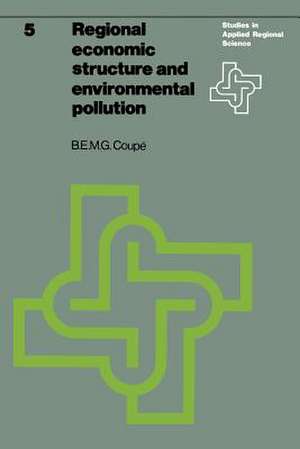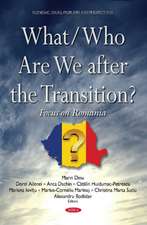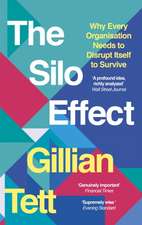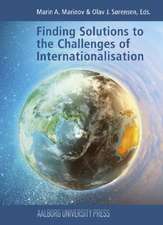Regional economic structure and environmental pollution: An application of interregional models: Studies in Applied Regional Science, cartea 5
Autor B.E.M.G. Coupéen Limba Engleză Paperback – 31 iul 1977
Din seria Studies in Applied Regional Science
-
 Preț: 382.75 lei
Preț: 382.75 lei -
 Preț: 382.36 lei
Preț: 382.36 lei - 15%
 Preț: 636.45 lei
Preț: 636.45 lei -
 Preț: 378.71 lei
Preț: 378.71 lei -
 Preț: 378.34 lei
Preț: 378.34 lei - 15%
 Preț: 642.03 lei
Preț: 642.03 lei - 15%
 Preț: 639.90 lei
Preț: 639.90 lei - 15%
 Preț: 643.99 lei
Preț: 643.99 lei - 18%
 Preț: 947.04 lei
Preț: 947.04 lei - 15%
 Preț: 644.49 lei
Preț: 644.49 lei -
 Preț: 382.75 lei
Preț: 382.75 lei -
 Preț: 380.07 lei
Preț: 380.07 lei -
 Preț: 381.21 lei
Preț: 381.21 lei -
 Preț: 358.56 lei
Preț: 358.56 lei - 15%
 Preț: 645.60 lei
Preț: 645.60 lei -
 Preț: 376.80 lei
Preț: 376.80 lei -
 Preț: 378.92 lei
Preț: 378.92 lei -
 Preț: 378.34 lei
Preț: 378.34 lei -
 Preț: 379.48 lei
Preț: 379.48 lei - 15%
 Preț: 633.53 lei
Preț: 633.53 lei -
 Preț: 386.39 lei
Preț: 386.39 lei
Preț: 381.00 lei
Nou
Puncte Express: 572
Preț estimativ în valută:
72.90€ • 79.44$ • 61.43£
72.90€ • 79.44$ • 61.43£
Carte tipărită la comandă
Livrare economică 23 aprilie-07 mai
Preluare comenzi: 021 569.72.76
Specificații
ISBN-13: 9789020706468
ISBN-10: 9020706462
Pagini: 180
Ilustrații: 176 p.
Dimensiuni: 152 x 229 x 9 mm
Greutate: 0.25 kg
Ediția:1976
Editura: Springer Us
Colecția Springer
Seria Studies in Applied Regional Science
Locul publicării:New York, NY, United States
ISBN-10: 9020706462
Pagini: 180
Ilustrații: 176 p.
Dimensiuni: 152 x 229 x 9 mm
Greutate: 0.25 kg
Ediția:1976
Editura: Springer Us
Colecția Springer
Seria Studies in Applied Regional Science
Locul publicării:New York, NY, United States
Public țintă
ResearchCuprins
1. General Introduction.- 1.1. The intraregional structure.- 1.2. The interregional structure.- 2. Economic-Ecologic Models.- 2.1. Input-Output analysis.- 2.2. Leontief’s Model.- 2.3. Cumberland’s Model.- 2.4. Daly’s Model.- 2.5. Isard’s Model.- 2.6. Victor’s Model.- 2.7. Conclusion.- 3. The Consumption Function.- 3.1. Theoretical consumption function.- 3.2. Estimation of the consumption function.- 4. The Investment Function.- 4.1. Theoretical investment function.- 4.2. Estimation of the investment function.- 5. The Employment Function.- 5.1. Theoretical employment function.- 5.2. Estimation of the employment function.- 6. The Pollution Input-Output Matrix.- 6.1. Conceptual approach.- 6.2. Estimation of the pollution input-output matrix.- 6.3. Comparison of the two estimations.- 7. The Pollution Dispersion Matrix.- 7.1. The concept of a pollution dispersion matrix.- 7.2. Previous studies.- 7.3. Estimation of the pollution dispersion matrix.- 7.4. Results.- 7.5. Pollution constraints and wind directions.- 8. The Input-Output Matrix.- 8.1. Imports and exports.- 8.2. Transportation problems and input-output tables.- 8.3. Construction of the model.- 9. The Mathematics of the Model.- 9.1. Geometric programming.- 9.2. Generalized reduced gradient methods.- 10. Results.- 10.1. Application I.- 10.2. Application II.- 10.3. Application III.A.- 10.4. Application III.B.- 10.5. Summary of the results of applications I, II, IIIA and IIIB.- 11. Conclusions.










